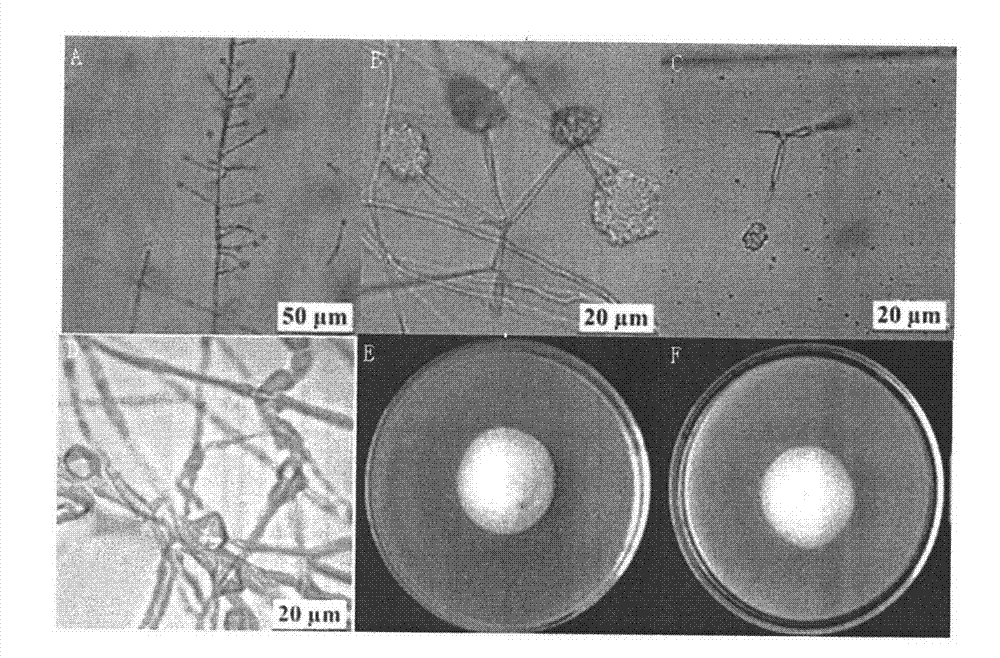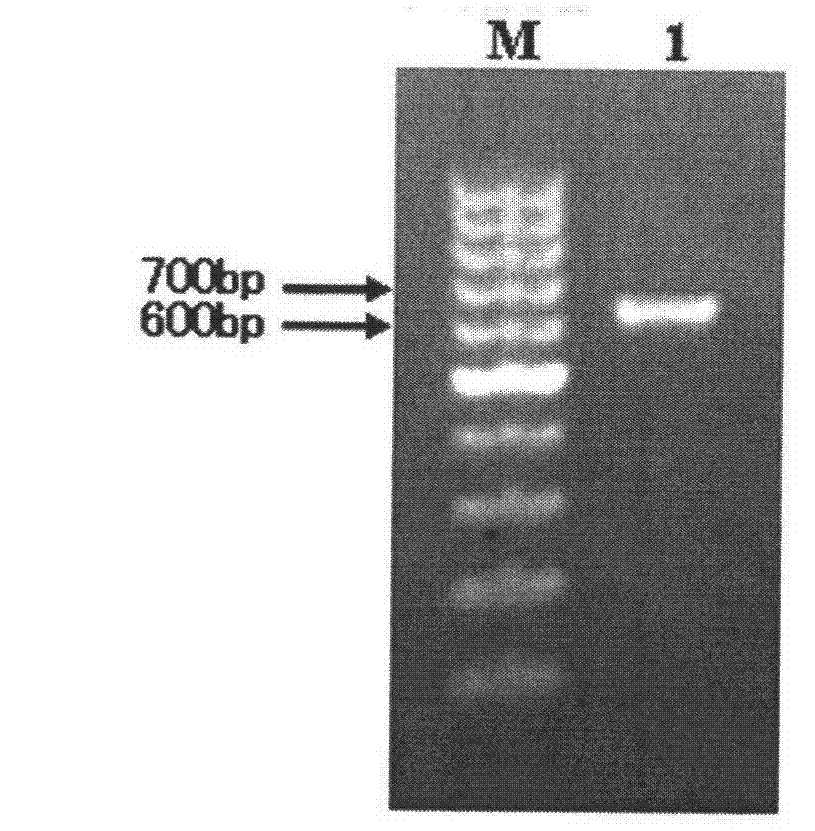Lecanicillium attenuatum strain
A technology of attenuating leukocytosis and strains, applied in fungi, biocides, plant growth regulators, etc., can solve problems such as no systematic reports, and achieve high-efficiency chitinase, great application potential, and high parasitic ability. Effect
- Summary
- Abstract
- Description
- Claims
- Application Information
AI Technical Summary
Problems solved by technology
Method used
Image
Examples
Embodiment 1
[0039] Embodiment 1. Isolation of the Lecanococcus attenuata bacterial strain of the present invention
[0040] (1) Medium: Selective medium (Kerry B R. An assessment of progress toward microbial control of plant parasitic nematode. Journal of Nematology, 1990, 22(4S): 621-631.): corn flour medium CMA , 17g; NaCl, 17.5g; Triton-100 (emulsifier), 3ml; Rose Bengal, 75mg; streptomycin sulfate, 50mg, add water to 1000ml. When the medium is about 45°C, add streptomycin and rose bengal, shake well and pour into a 9cm diameter Petri dish for use.
[0041] (2) Separation method: wash the soybean roots collected from Anda, Heilongjiang Province, infected with cyst nematode with water to remove sediment, pick fresh cysts under a Nikon SMZ1000 dissecting microscope, and disinfect the cysts with 2% NaClO surface. Place on the prepared medium, each dish contains 5 cysts, then place the dish in a constant temperature incubator at 27°C for cultivation, observe regularly, pick the growing my...
Embodiment 2
[0042] Example 2. Colony traits culture and morphological identification of the present invention
[0043] (1) Cultivation of colony traits: Transfer the strains stored in the refrigerator at 4°C to a CMA plate with a diameter of 9 cm, activate at 27°C for 5 days, use a puncher with a diameter of 6 mm to cut off the bacterial block at the edge of the colony, and transfer it to a new PDA Plates were cultured in the dark at 27°C and repeated 3 times. From the 2nd day, the colony shape, color and colony growth were recorded until the colonies covered the plate.
[0044] The colony grows slowly on the CMA medium. After 12 days of culture, the colony diameter can reach 3.3-3.4cm; figure 1 , E), the back is initially white, and after 10d it becomes pale yellow (see figure 1 , F).
[0045] (2) Morphological identification of bacterial strains: using the glass slide culture method, the CMA medium is divided into thin slices of 5 mm × 5 mm, picked on the glass slide, and then the ac...
Embodiment 3
[0047] Example 3. Molecular Biology Identification, ITS Sequence Alignment and Phylogenetic Analysis of the present invention
[0048] (1) Synthesis of amplification primers: synthesized by Shanghai Sangon Bioengineering Service Co., Ltd.;
[0049] Universal PCR amplification primers:
[0050] ITS1-F: 5'-CTTGGTCATTTAGAGGAAGT-3'
[0051] ITS4-R: 5'-CCTCCGCTTATTGATATGC-3'
[0052] (2) Genomic DNA extraction: the DNA of Lecanococcus attenuata was extracted by CTAB method;
[0053] (3) PCR reaction system (20 μl): 1 μL of template DNA, 10 μL of PCR Master Mix (Thermo Fisher Scientific), 1 μL of upstream and downstream primers, supplemented with deionized water to 20 μL. Reaction conditions: 94°C for 4min pre-denaturation; 94°C for 1min, 55°C for 30s, 72°C for 90s, 35 cycles; 72°C for 10min;
[0054] (4) Determination of the gene sequence of the Lecanococcus attenuata bacterial strain: the PCR product was detected by 1% agarose gel electrophoresis, and the results are shown in ...
PUM
| Property | Measurement | Unit |
|---|---|---|
| molecular weight | aaaaa | aaaaa |
| diameter | aaaaa | aaaaa |
Abstract
Description
Claims
Application Information
 Login to View More
Login to View More - R&D
- Intellectual Property
- Life Sciences
- Materials
- Tech Scout
- Unparalleled Data Quality
- Higher Quality Content
- 60% Fewer Hallucinations
Browse by: Latest US Patents, China's latest patents, Technical Efficacy Thesaurus, Application Domain, Technology Topic, Popular Technical Reports.
© 2025 PatSnap. All rights reserved.Legal|Privacy policy|Modern Slavery Act Transparency Statement|Sitemap|About US| Contact US: help@patsnap.com



